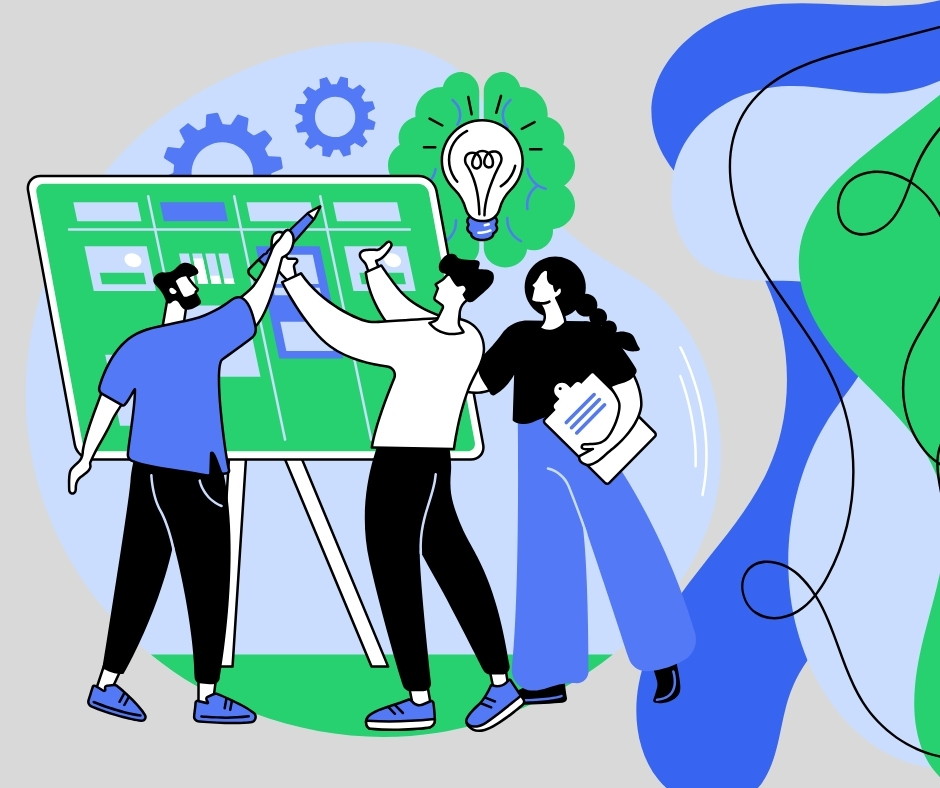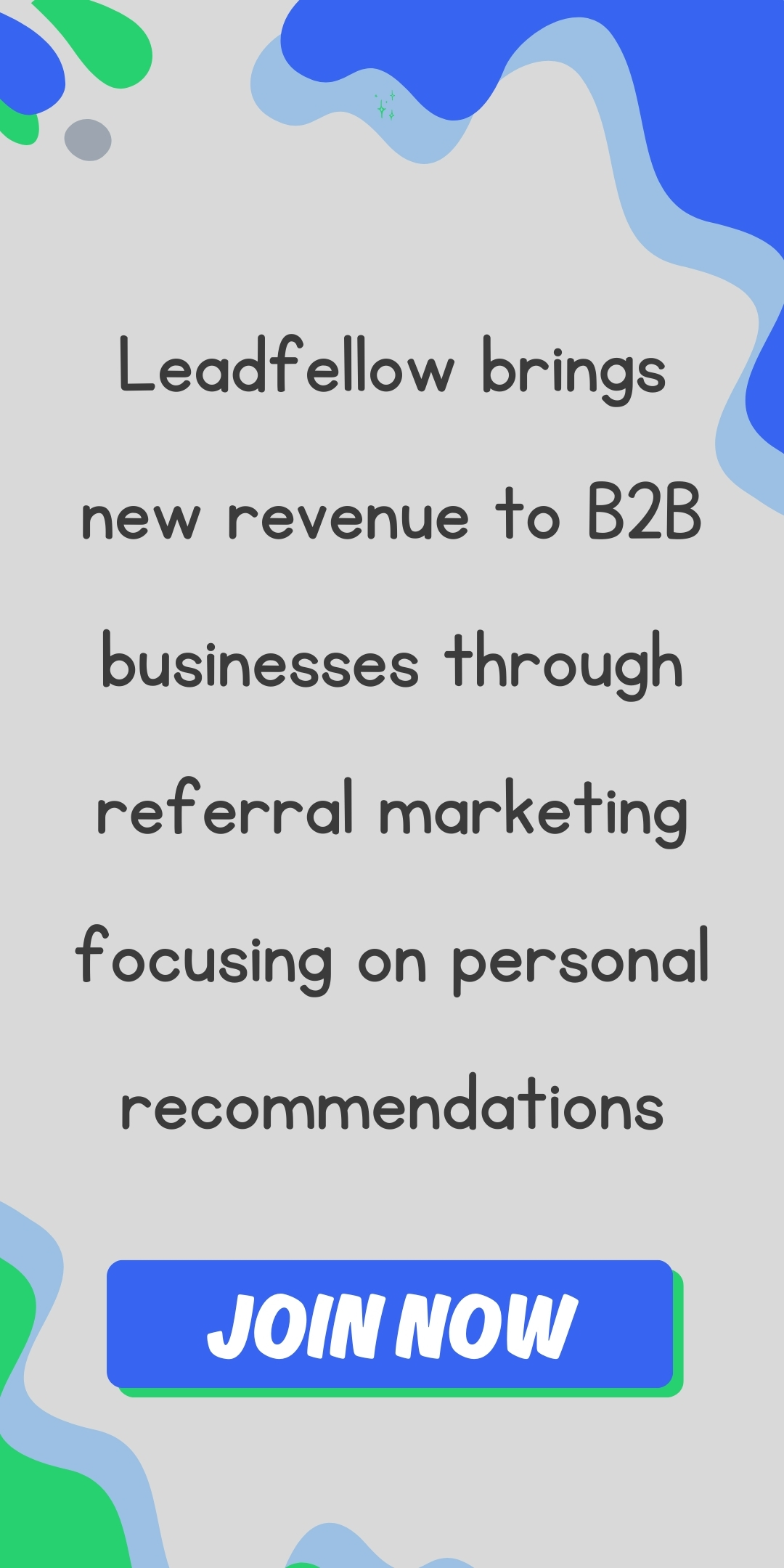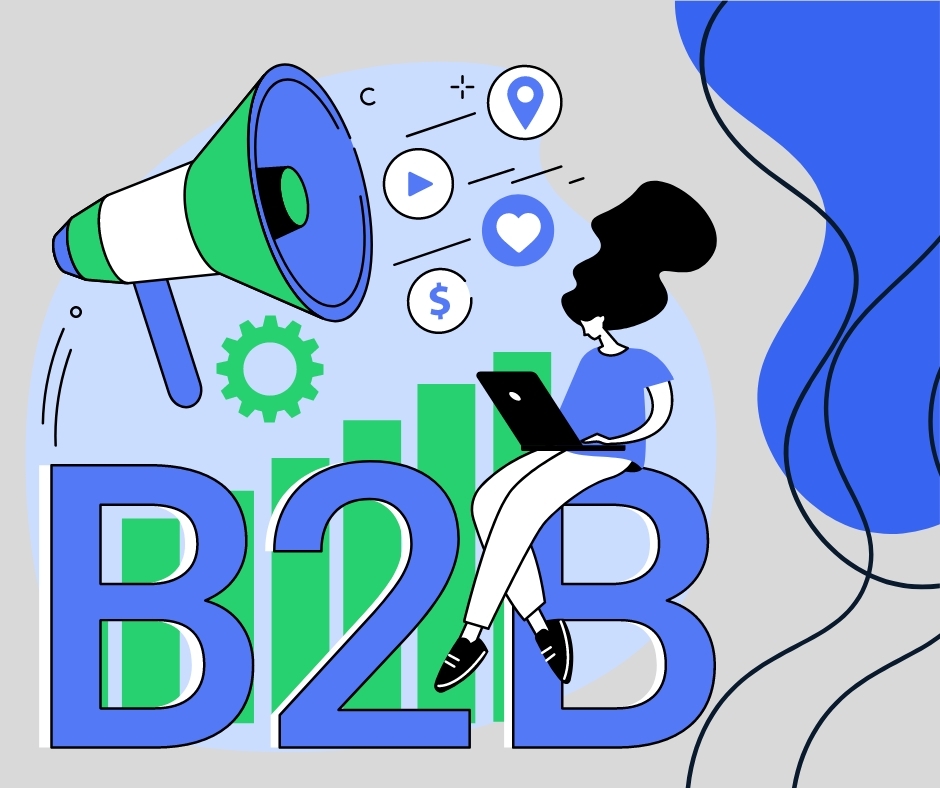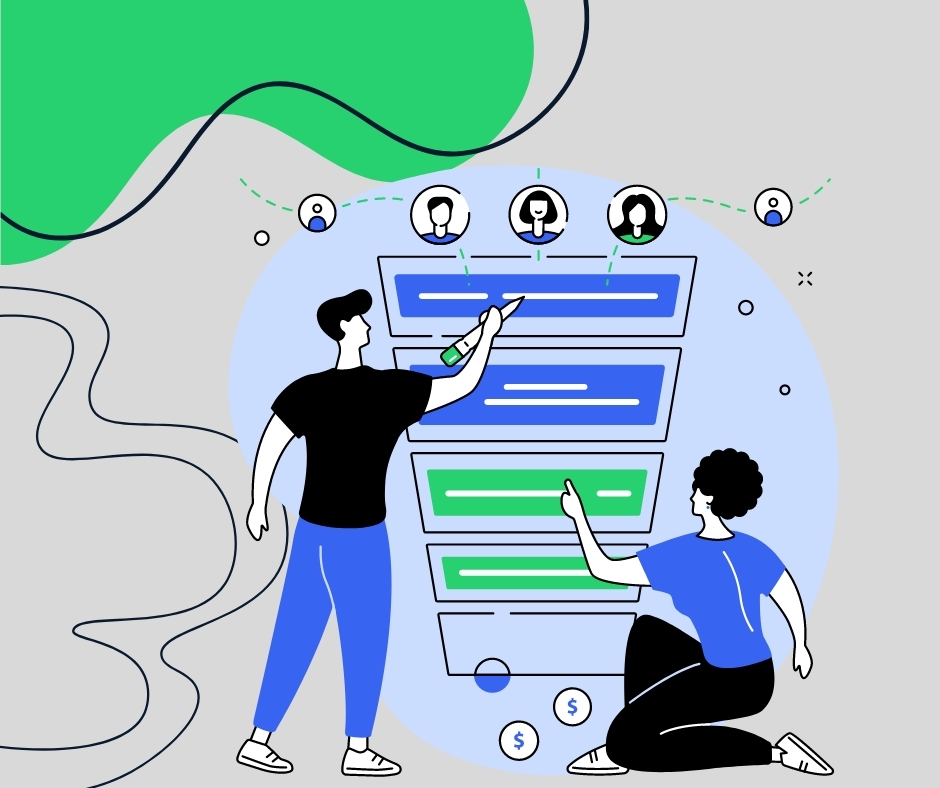TABLE OF CONTENTS
Share This Story, Choose Your Platform!
Background
In the highly competitive world of B2B sales, companies need to tap into the goldmine of warm leads to achieve success. Building a sales strategy that focuses on targeting and engaging with warm leads can greatly improve a company’s sales figures and overall business growth. Warm leads are potential customers who have already shown interest in a company’s products or services. These leads are more likely to convert into paying customers due to their existing engagement and familiarity with the brand. By effectively nurturing and engaging with warm leads, a company can optimize its sales process and increase the chances of closing deals. This article will explore various strategies and techniques that can help companies tap into the goldmine of warm leads and drive their sales to new heights.
What are Warm Leads?
Warm leads are potential customers or qualified prospects who have already shown some level of interest or engagement with a business or its offerings. These leads have already interacted with the company in some way, such as subscribing to a newsletter, attending a webinar, or filling out a contact form.
Compared to cold leads, who have no previous interaction or interest in the business, warm leads are more receptive to sales efforts. They have already shown some level of trust and familiarity with the company, making them easier to convert into paying customers.
In comparison to hot leads, who are actively ready to make a purchase, warm leads may require some nurturing and further engagement to guide them through the sales process. However, warm leads still possess a higher potential for conversion than cold leads, which is why they should be prioritized.
By focusing on warm leads, sales teams can significantly increase their conversion rates and shorten the sales cycle. Warm leads are familiar with the company and its offerings, making it easier to establish rapport and build trust. This increases the chances of converting warm leads into loyal customers. Therefore, sales teams must identify and focus on warm leads throughout the sales process.
Benefits of Tapping into Warm Leads
Tapping into warm leads can bring numerous benefits to your B2B sales efforts. Firstly, warm leads have already demonstrated some level of trust and familiarity with your company, which makes them more receptive to your sales messages. This means that you can spend less time convincing them of your value and more time focusing on guiding them through the sales process. Warm leads also present a higher potential for conversion compared to cold leads, increasing your chances of closing deals and achieving your sales goals. Additionally, leveraging warm leads can result in shorter sales cycles, as these prospects are already further along in their buying journey. By tapping into warm leads, you can maximize your sales team’s efficiency and increase your overall sales figures. In the next sections, we will explore strategies and techniques to effectively nurture and engage with warm leads to drive successful conversions and unlock the opportunities they present.
Increased Customer Retention Rates
Increasing customer retention rates is essential for the long-term success of any business. And one effective way to boost those rates is by tapping into warm leads. These are potential customers who have already shown some level of interest in your products or services. By targeting these warm leads, you can nurture relationships, increase sales, and ultimately retain more customers.
One of the key factors in customer retention is providing a smooth and enjoyable sales experience. When customers have a positive interaction with your sales team, they are more likely to come back for repeat purchases. This can be achieved by ensuring that your sales representatives are knowledgeable, friendly, and responsive to customer needs. Additionally, personalized and tailored sales conversations can greatly enhance the customer experience.
Receiving referrals from happy customers is another powerful way to increase customer retention rates. When existing customers refer their friends, family, or colleagues to your business, a higher level of trust is established right from the start. This leads to a higher closing ratio for these referred leads. By prioritizing customer satisfaction and making your customers happy, you can proactively generate referrals and expand your customer base.
Prospecting is a crucial aspect of driving top-line performance and customer retention rates. By actively seeking out potential customers who are likely to convert into loyal customers, you can control the growth of your business. Effective prospecting strategies include segmenting your target market, leveraging data and analytics to identify high-value prospects, and creating relevant content that appeals to your ideal customers.
In conclusion, tapping into warm leads is vital for increased customer retention rates. By providing a seamless sales experience, generating referrals, and implementing effective prospecting techniques, businesses can not only retain more customers but also drive sustainable growth.
Improved Efficiency for the Sales Team
Tapping into warm leads can significantly improve efficiency for the sales team in several ways. First, warm leads are individuals who have already expressed some level of interest in your product or service. These leads may have attended a webinar, downloaded an e-book, or engaged with your content in some way. By focusing on warm leads, sales reps can prioritize their efforts and avoid wasting time on unqualified prospects.
Additionally, warm leads often require less effort to convert into customers compared to cold leads. They are already familiar with your brand and have shown some level of trust and interest. This means that sales reps can spend less time convincing and educating these leads during the sales process, and more time on closing the sale.
Automation tools like Dooly can further improve efficiency by streamlining data entry tasks. Instead of spending valuable selling time on manual data entry, sales reps can use automation software to automatically update customer information in their CRM system. This saves time and allows sales reps to focus on selling and building relationships with prospects.
Moreover, the use of artificial intelligence (AI) in customer interactions can greatly enhance efficiency. AI can quickly analyze massive amounts of customer data and provide valuable insights to sales reps. This enables sales reps to personalize their approach, anticipate customer needs, and offer tailored solutions. AI-powered chatbots can also handle routine customer inquiries, freeing up the sales team to focus on high-value sales conversations.
In summary, tapping into warm leads improves efficiency for the sales team by prioritizing qualified prospects, reducing the effort required to convert leads into customers, and leveraging automation tools and AI to streamline data entry and provide valuable insights into customer interactions.
Higher Quality of Leads for Conversion
Tapping into warm leads offers several key benefits that can lead to higher quality leads and improved conversion rates.
Firstly, warm leads are already familiar with your brand and have shown some level of trust and interest. This familiarity makes them more likely to engage with your sales efforts and consider your offerings. As a result, the overall quality of these leads is generally higher compared to cold leads.
Furthermore, warm leads require less effort to convert into customers. They have already gone through a certain level of education and are more likely to be receptive to your sales pitch. This allows sales reps to spend less time convincing and educating these leads during the sales process and more time on closing the sale.
Studies have shown that warm leads can significantly improve conversion rates. According to a report by HubSpot, warm leads have a 20% higher chance of converting compared to cold leads. This higher conversion rate can greatly impact your sales figures and contribute to the overall success of your business.
By tapping into warm leads, you not only increase your chances of closing more deals but also ensure that you are focusing your efforts on high-quality leads that are more likely to become loyal customers. This targeted approach enables you to optimize your sales process and achieve your sales goals more efficiently.
Lower Cost Per Acquisition (CPA)
Lower Cost Per Acquisition (CPA) is a key concept in B2B sales strategies that focuses on minimizing the cost of acquiring new customers. This metric is important because it directly impacts a company’s profitability and overall success. Tapping into warm leads, who are already familiar with your brand and have shown interest, can help achieve a lower CPA.
One of the main reasons warm leads contribute to a lower CPA is their increased conversion rates. Since warm leads have already gone through a certain level of education and trust-building, they are more likely to engage with your sales efforts and consider your offerings. This higher likelihood of conversion means that less time, effort, and resources need to be spent on convincing and closing these leads, reducing the overall cost per acquisition.
In addition to increased conversion rates, warm leads also help reduce marketing expenses. With warm leads, companies can focus their marketing efforts and budget on specific target audiences that have already shown interest. This eliminates the need for broad and expensive marketing campaigns that may include cold leads and uninterested prospects. By targeting warm leads with relevant and personalized content, companies can maximize their marketing spend and achieve a lower cost per acquisition.
In conclusion, tapping into warm leads is an effective B2B sales strategy to achieve a lower cost per acquisition. The higher conversion rates and decreased marketing expenses associated with warm leads contribute to a more efficient and cost-effective sales process, ultimately boosting profitability and success.
Identifying and Qualifying Warm Leads
When it comes to B2B sales, one of the keys to success lies in tapping into the goldmine of warm leads. These are the potential customers who have already shown interest in your offerings and have taken steps toward engaging with your brand. Identifying and qualifying warm leads is an essential aspect of any sales strategy. By focusing on these high-quality prospects, businesses can increase their conversion rates, reduce marketing expenses, and ultimately achieve a lower cost per acquisition. In this article, we will explore effective methods to identify and qualify warm leads, enabling you to build a strong and responsive sales pipeline.
Defining Your Target Audience and Ideal Customers
Defining and reaching your target audience and ideal customers is crucial for the success of any B2B sales strategy. By understanding who your customers are and what they want, you can effectively tailor your sales efforts towards them and tap into the goldmine of warm leads.
One method to define your target audience is by categorizing them into interest or demographic groups. By segmenting your potential customers based on their interests, you can create targeted content and marketing campaigns that resonate with them. Demographic targeting, on the other hand, allows you to narrow down your audience based on factors such as age, gender, location, and income level.
Another approach is company and role targeting. By identifying the specific industries or sectors that your ideal customers belong to, you can focus your efforts on engaging with key decision-makers who are most likely to be interested in your product or service. Additionally, targeting based on job titles or roles within these organizations can help you hone in on individuals who have the authority to make purchasing decisions.
Custom and lookalike audiences are effective tools that can aid in defining your target audience. Custom audiences allow you to upload your existing customer data or email lists, enabling you to specifically target individuals who share similar characteristics or behaviors. Lookalike audiences, on the other hand, let you reach new potential customers who are similar to your existing ones, expanding your reach to high-value prospects.
Understanding the demographics and psychographics of your target audience is key. This includes factors such as their age, gender, job title, challenges, and aspirations. Additionally, knowing their reading preferences and the influencers they follow can help you create relevant content and engage with them effectively.
By using these methods and delving deep into your target audience, you can refine your B2B sales strategy and focus your efforts on attracting high-quality leads and converting them into loyal customers.
Identifying Potential Prospects in Your Target Markets
Identifying potential prospects in your target markets is essential for a successful B2B sales strategy. There are several methods you can use to discover and connect with these prospects.
One approach is to segment your target audience based on interest and demographic groups. By understanding what interests them and their demographics, you can create tailored marketing campaigns that resonate with their specific needs and preferences. This method allows you to align your product or service with their interests, increasing the chances of conversion.
Another effective way to identify potential prospects is by targeting them based on their company and job titles. By understanding the specific industries or sectors your ideal customers belong to, you can focus your efforts on engaging with key decision-makers who have the authority to make purchasing decisions. This method allows you to hone in on individuals who are most likely to be interested in your offering.
Custom and lookalike audiences are powerful tools that can further refine your targeting. Custom audiences enable you to upload your acquired lists of target prospects’ contact information, allowing you to directly reach out to individuals who have already shown interest. Lookalike audiences, on the other hand, allow you to expand your reach by targeting new potential prospects who have similar characteristics and behaviors to your existing customer base.
By utilizing these methods, you can effectively identify potential prospects in your target markets and increase the chances of successful B2B sales.
Utilizing Relevant Content to Attract High-Quality Leads
Utilizing relevant content is a key strategy to attract high-quality leads in B2B sales. By creating valuable and informative content, businesses can educate their audience and provide them with the information they need to make informed decisions.
To start, it’s crucial to understand the needs and pain points of your target audience. By conducting market research and gathering insights, you can create content that addresses their specific challenges and offers solutions. This targeted approach ensures that the content resonates with your ideal customers and positions you as an expert in your industry.
When creating content, it’s important to focus on quality rather than quantity. Rather than churning out generic blog posts or articles, businesses should strive to provide in-depth and well-researched content that goes beyond surface-level information. This not only helps to establish authority and credibility but also attracts high-value prospects who are more likely to engage with your brand.
Optimizing the user experience is also critical in converting leads. Incorporating different types of content, such as videos, infographics, and case studies, provides variety and caters to different preferences. Additionally, including relevant calls to action throughout the content helps to guide the audience’s next steps and encourage them to take action.
In summary, utilizing relevant content is an effective way to attract high-quality leads. By creating valuable, informative, and educational content that addresses the needs of your target audience, you can position your brand as a trusted authority and increase the likelihood of converting leads into loyal customers. Remember to optimize the user experience by incorporating different types of content and strategic calls to action.
Establishing Long-Term Relationships with Loyal Customers
Establishing long-term relationships with loyal customers is crucial for the success of any B2B sales strategy. Not only do loyal customers provide repeat business, but they also act as brand ambassadors, referring new customers and boosting your reputation in the market.
Nurturing existing customers is key to increasing customer retention rates. By consistently providing value and personalized communication, you can strengthen the relationship and ensure that customers remain loyal to your brand. This involves going beyond transactional interactions and truly understanding the needs and goals of your customers.
One effective strategy is to implement loyalty programs that reward customers for their continued support. These programs can include exclusive discounts, access to special events, or personalized offers. By making customers feel valued and appreciated, you increase the likelihood of repeat business and word-of-mouth referrals.
Excellent customer service is also essential for maintaining customer loyalty. Promptly addressing any concerns or issues that arise shows customers that their satisfaction is a priority. Going the extra mile to exceed expectations can further solidify the relationship and differentiate your brand from competitors.
In conclusion, focusing on establishing and nurturing long-term relationships with loyal customers is a key component of any successful B2B sales strategy. By investing in personalized communication, loyalty programs, and excellent customer service, businesses can increase customer retention rates and secure repeat business.
Profiling the Warm Lead Database
One of the most valuable assets a business has is its warm lead database. These are potential customers who have shown some level of interest in your products or services and are more likely to convert compared to cold leads. However, to fully tap into this goldmine of warm leads, it is essential to profile your database effectively.
Profiling involves gathering relevant information about each lead in your warm lead database to understand their needs, preferences, and pain points. This information can be obtained through various means, such as conducting surveys, analyzing past interactions, and leveraging customer analytics tools. By understanding the characteristics and behaviors of your warm leads, you can tailor your sales and marketing efforts to address their specific needs and provide them with more personalized experiences.
Profiling your warm lead database also helps you prioritize your sales efforts. By identifying high-quality leads and high-value prospects, you can focus your resources on those with the highest potential for conversion. This allows you to optimize your sales process and increase efficiency, leading to improved sales figures and higher ROI.
In addition, profiling your warm leads enables you to segment your database effectively. By categorizing leads based on relevant criteria such as industry, company size, or purchase history, you can create targeted marketing strategies and outreach efforts. This ensures that your messages and content resonate with the different segments within your warm lead database, increasing engagement rates and the chances of conversion.
In summary, profiling your warm lead database is crucial for maximizing the potential of these leads. It allows you to understand your leads on a deeper level, prioritize your efforts, and effectively segment your database. By leveraging this information, you can tailor your sales and marketing strategies to meet the unique needs of each warm lead, ultimately increasing your chances of conversion and driving business growth.
Gathering Data Through Surveys, Interviews, and Focus Groups
Gathering data through surveys, interviews, and focus groups is an effective way to identify and qualify warm leads. These methods enable businesses to gain valuable insights into their target audience and potential prospects, allowing them to tailor their sales and marketing strategies accordingly.
The first step in this process is designing the questions for the surveys, interviews, or focus groups. These questions should be aimed at obtaining information about the leads’ needs, preferences, pain points, and purchase intentions. The questions should be clear, concise, and relevant to gather accurate and actionable data.
Once the questions are designed, the next step is selecting participants. Businesses should target individuals who fall within their target market and have previously shown some level of interest in their products or services. This ensures that the data collected is from warm leads who are more likely to convert.
Conducting the surveys, interviews, or focus groups requires careful planning and execution. These methods can be conducted online, through phone calls, or in person, depending on the resources and preferences of the business. During the sessions, businesses need to carefully record the responses and any additional feedback provided by the participants.
Finally, the data collected from the surveys, interviews, and focus groups needs to be analyzed. This involves summarizing the responses, identifying common themes, and deriving insights that can be used to profile the warm leads effectively. By analyzing the data, businesses can gain a deeper understanding of their target audience and potential prospects, enabling them to tailor their sales and marketing efforts for better engagement and conversion rates.
In conclusion, gathering data through surveys, interviews, and focus groups is a crucial part of identifying and qualifying warm leads. By implementing these methods, businesses can gain valuable insights into their target audience’s needs and preferences, enabling them to tailor their sales and marketing strategies accordingly.
Categorization and Segmentation of Data by Demographics & Behavioural Factors
Categorization and segmentation of warm lead data based on demographics and behavioral factors play a crucial role in optimizing B2B sales strategies. By categorizing leads effectively, businesses can tailor their sales and marketing efforts to specific groups, leading to higher conversion rates and an improved ROI.
Demographic information such as age, gender, location, industry, and job title can provide valuable insights for categorizing leads. For instance, age and gender can determine the tone and language used in communications and marketing materials. Location can help businesses identify target markets and customize offerings accordingly. Industry and job titles can help understand the specific needs and pain points of potential customers.
In addition to demographics, behavioral factors are equally important for effective segmentation. Website interactions, such as page visits, downloads, and time spent, can indicate the level of interest and engagement of a lead. Email engagement rates, such as open and click-through rates, can indicate the receptiveness of a lead to communication. Social media activity, such as likes, comments, and shares, can provide insights into a lead’s preferences and interests.
By combining demographic and behavioral data, businesses can create highly targeted segments that allow for personalized and relevant sales conversations. This maximizes the chances of converting warm leads into loyal customers. Categorization and segmentation of data based on demographics and behavioral factors provide businesses with the necessary insights to align sales strategies with the unique needs and characteristics of different groups of warm leads.
STAY IN THE LOOP
Subscribe to our free newsletter.
Are you ready to unlock the full potential of your sales strategy? What is Lead Sharing, and how can you benefit from it?
The sales funnel starts with leads. Learn what sales leads are, how they’re different from prospects, and how to generate them successfully.
In the realm of B2B sales, referrals play a crucial role in driving business. A significant percentage of B2B sales begin with a referral, highlighting the impact of word-of-mouth in the business world.
Customer reviews can have a significant impact on purchasing decisions. Studies have shown that the majority of consumers read reviews before making a purchase, and positive reviews can increase the likelihood of a sale







